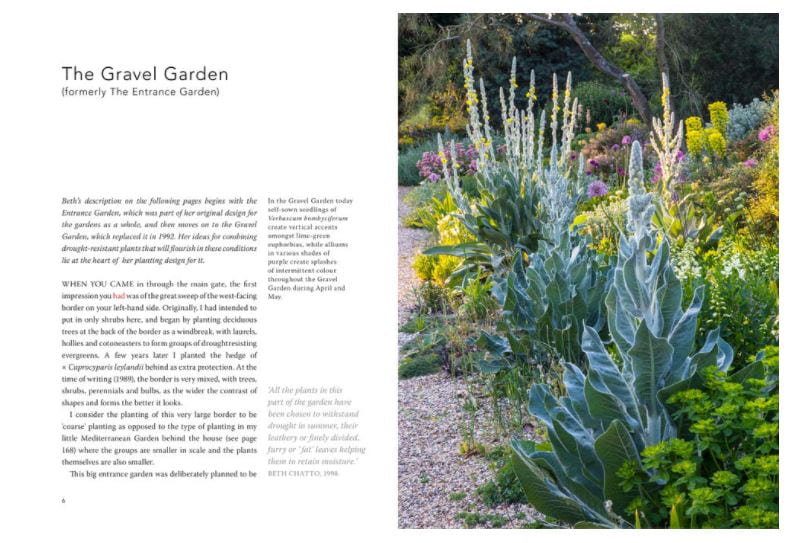When this book came out 33 years ago it was revolutionary as was Beth Chatto’s planting. You didn’t make the soil fit your plants, you made your plants fit the soil and climate and amount of shade that you had in your garden. Now, we can’t imagine it being any different but it was.
The book is a walk around the various elements of Chatto’s garden with beautiful photography by Steven Wooster. Each area has different types of soil, amount of sunshine and shade although none of it has much rain due to its geography. For example, the Gravel Garden or what was first known as The Entrance Garden, talks us through the conditions of the garden, some of the key plants such as bergenias and what I particularly like, the developments of the garden
In this section Dave Ward, tells the story of how this garden has developed, moving from The Entrance Garden to The Gravel Garden and into The Gravel Garden today. This gives a real sense of a garden as no one keeps a garden exactly the same over decades. Things die(!), need to be moved or grow old and tired (not just the gardener but plants as well) and so gardens change. New plants have been introduced, beds have been reshaped and refreshed.

The planting is sublime and I really enjoyed the parts in the book where Beth explains her design ideas. First there is the asymmetrical triangle regarded as the golden principle of design by the Japanese flower arrangers and the tapestry of low growing plants covering the soil. The focus is on the leaves and shapes of plants and less on the colour, preferring waves of soft colour to ebb and flow. Strong colours are used but in small amounts with paler shades of the same colour grouped around them. Or, planted with other equally intense colours such as Crocosmia ‘Lucifer’ with the acid yellow of euphorbias and blue of Salvia.
Each area of the garden, once described, has a planting plan drawn out with plants listed. This is so useful as a starting point for our own beds and gardens. None of the plants are unknown but it is the way that they have been put together that shouts out. The gravel garden at the front of our house is due for a refresh in the next couple of years and so the planting plan that is almost the same size as the garden will be very useful. I will do it as Beth used to which is by removing everything, unless there are trees you want to keep, refreshing the soil and then replanting.
The final section is an extensive plant directory of plants that are now used in the garden. Where Salvias are listed it gives the exact ones that are grown with brief descriptions of each and photos of some. At the sides of pages are lists of plants such as those that attract bees or those with good seedheads and those that are good ground cover.
This really is an excellent book and I am so pleased that Anne-Marie Powell recommended it – although she had the first publication of the book.
